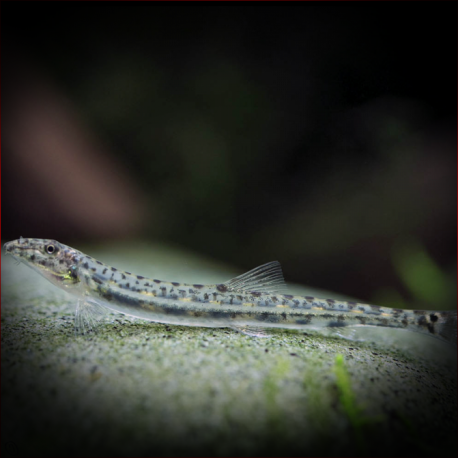More info
Datasheet
| Minimum Tank Size | 270 litres / 71.33 US gallons |
| Maximum Size | 20.0cm / 7.87inches |
| Temperature | 16°C / 60.80°F - 24°C / 75.20°F |
| Hardness | 1.01dgH / 18ppm - 12.05dgH / 215ppm |
| pH | 6.0-8.0 |
Behaviour:
In an aquarium setup tailored to its needs, the Horse Face Loach is best kept with species that dwell in the upper part of the water such as Rasbora, Devario, Laubuca, and Barilius spp. Sand-dwelling loaches from families Botiidae, Cobitidae, and Nemacheilidae can also be suitable tank mates, although research is crucial due to potential territorial or aggressive behavior. It is advised to have a small group of at least three specimens, with six being ideal since they naturally exist in loose aggregations. While occasional skirmishes may occur, resulting in minor territorial disputes, severe physical harm is uncommon.
Feeding and Diet:
The Horse Face Loach, specifically Acantopsis species, tends to sift mouthfuls of substrate through their gills to extract food like insect larvae and small crustaceans in their natural habitat. In aquariums, they are not finicky eaters, accepting a varied diet consisting of high-quality sinking dried foods, live, and frozen options such as Artemia, Tubifex, Daphnia, and bloodworm.
Reproduction & Dimorphism:
Details regarding the reproduction of the Horse Face Loach are unrecorded. In terms of sexual dimorphism, females of this species typically grow larger than males. Males can be distinguished by their modified pectoral fins with the first couple of branched rays extended.
Habitat and Distribution:
Acantopsis species, including the Horse Face Loach, predominantly inhabit flowing river channels with sandy, fine gravel, or muddy substrates. They are known to migrate to flooded areas during the wet seasons. The Horse Face Loach can be found across the Greater Sunda Islands, such as Sumatra, Borneo, Java, and Peninsular Malaysia. However, due to limited research, the taxonomy and distribution of the species remain poorly understood. Populations have also been reported in regions like Sabah, Manipur, and Thailand, suggesting the likelihood of undiscovered taxa.
Aquarium Setup:
Maintaining an aquarium for the Horse Face Loach involves providing a soft, sandy substrate to accommodate its burrowing behavior. Enrich the environment with water-worn rocks, driftwood branches, and tree roots for hiding places and shaded spots. Dim lighting is suitable unless you plan to incorporate live plants. Maintaining high oxygen levels and moderate water movement is essential, requiring the use of power filters, airstones, or powerheads as necessary. It's crucial to keep the tank pristine with regular water changes of 30-50% tank volume weekly to ensure optimal conditions for the loach.

